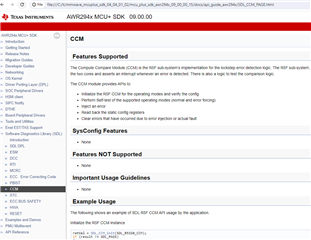Hi all,
Regarding the CCM module in SDL, I have three questions:
1. Does this module initialize during system startup?
2. Once this module initializes during startup, will it run continuously in the background and perform ongoing checks?
3. why is there no information about CCM in AWR294x Technical Reference Manual ?
Best Regards,
Shrooq ABDELBARY


